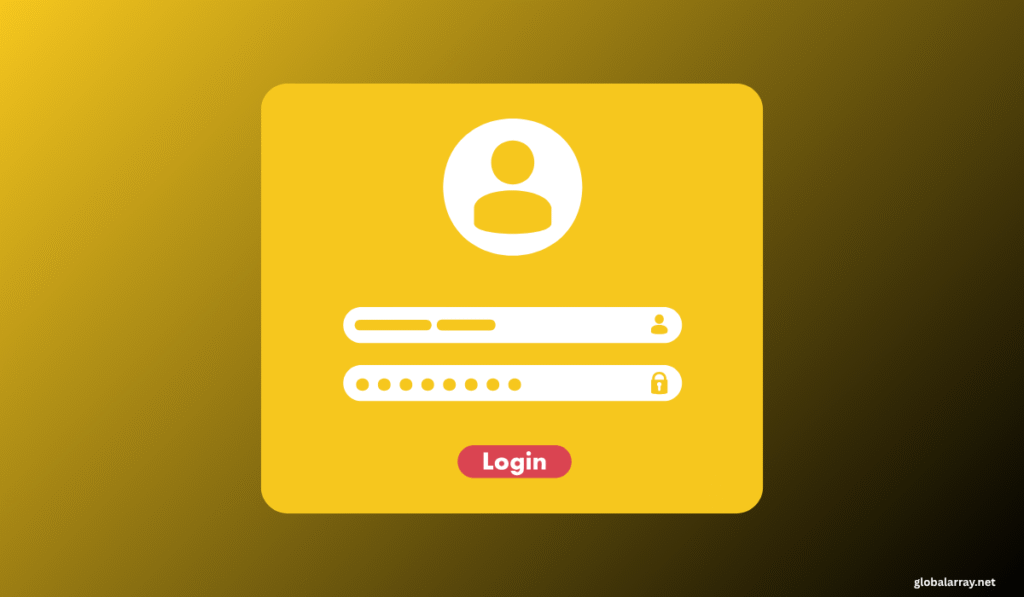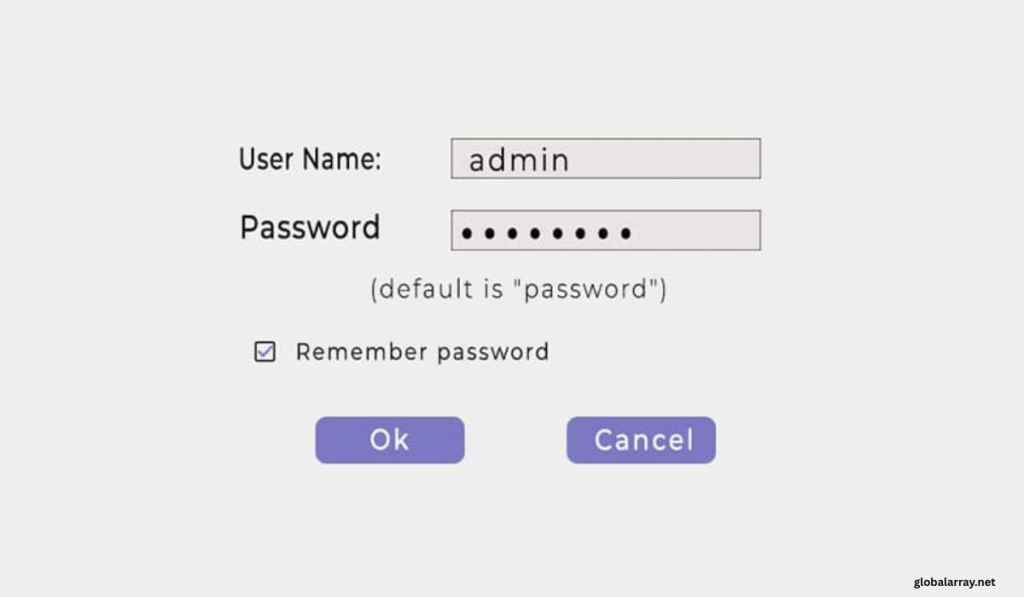192.168.1.250 is a private IP address used to access the router’s admin page for configuration and management. If you’re looking to set up your router or adjust network settings, knowing how to reach this address is essential. It allows you to modify settings like Wi-Fi passwords, security, and more. In this guide, we’ll show you how to log in, troubleshoot common issues, and optimize your network.
What is 192.168.1.250 and What is It Used For?
192.168.1.250 is a private IP address commonly used to manage and configure devices within local networks. It’s frequently assigned to routers, helping you to access the router’s settings through a browser. Once logged in, you can manage settings such as networked printers, Wi-Fi configurations, and other connected devices within your home or office networking setup. This specific IP address falls within a reserved range for local network use, ensuring it’s not exposed to the internet, keeping your connection more secure.
Private IP in Networking
A private IP address like 192.168.1.250 is often used within local networks (LANs) in both home and office settings. It serves as a unique identifier for devices connected to a local network, enabling them to communicate securely. Devices such as computers, smartphones, and other networked gadgets use this IP to send data to each other. What makes 192.168.1.250 valuable is that it ensures protected communication by keeping the local network isolated from the internet. Without it, devices wouldn’t be able to send or receive data effectively within the network, and external access would be much harder to manage.
Common Use in Wi-Fi Extenders or Access Points
192.168.1.250 is often used as the login IP to access the setup page of networking devices like Wi-Fi extenders or access points. It helps users configure and manage their home Wi-Fi network, especially when extending the range of their main router. By typing this IP into a browser’s address bar, you’re directed to a page where you can adjust settings, update network name (SSID), and modify password or security settings.
How to Access 192.168.1.250 Login Page

To access 192.168.1.250, you first need to make sure you’re using the correct IP address. Type 192.168.1.250 into the address bar of your browser (Google Chrome or Microsoft Edge are ideal). Once you’ve entered the address, press the Enter key on your keyboard. If you don’t see the login page right away, don’t panic. Sometimes, there can be issues with your connection or browser settings. It’s a good idea to try restarting your networking device or switching browsers to troubleshoot.
If you’re still facing problems, try accessing the login page directly via Netgear extender settings, or check if your router’s IP address has been changed from the default. In some cases, the connection may fail due to minor glitches, but don’t worry—just make sure you’re not dealing with any mess caused by wrong settings.
Also Read Our Article: 192.168.11.1 Router Login, IP Guide & Troubleshooting
Connect to the Correct Network
To begin, it’s important to double-check that you are connected to the right network before attempting to log into the router. Whether you’re using Wi-Fi or a LAN cable, make sure the device you’re using is properly connected to the router. If you’re on a different network, such as your neighbor’s Wi-Fi or using mobile data, you won’t be able to access the login page at 192.168.1.250. Once you’re sure you’re on the correct network, open your browser and type 192.168.1.250 in the login IP field to reach the settings page.
Enter the IP in a Web Browser (Not Search Engine)
To access the 192.168.1.250 login page, you need to begin by opening your internet browser. It’s crucial to enter the IP address directly into the address bar, not the search bar. Many users mistakenly try to type the IP in a search engine, which won’t work. Instead, type 192.168.1.250 straight into the URL bar of your browser and hit Enter. If you face no luck initially, ensure the IP address was entered correctly with no typos, as even the slightest mistake can prevent accessing IP addresses.
Use Default Login Credentials
To log in to your 192.168.1.250 page, you’ll first need to make sure you’re using the correct router’s login details. These details, which include the default username and password, are often found on a sticker attached to your router. If you can’t find the sticker, you can always refer to your manual for the specific credentials. Most routers come with a default admin username and password, but you might want to update these for better security. By doing so, you can protect your network from any unwanted access.
Troubleshooting: 192.168.1.250 Not Working?
Check IP Address Accuracy
One of the number one reasons why you may be facing a not working issue with your 192.168.1.250 login is due to entered incorrectly IP addresses. Often, typing errors such as mixing up a digit or forgetting a period can cause the device not to recognize the IP address. Make sure to cross-check the IP address you’ve inserted in the address bar to avoid any mistakes. This can be a common but easily missed problem when attempting to enter your router’s IP address into the browser.
Restart Router or Extender
If you’re troubled by difficulties connecting to the router or accessing the login page at 192.168.1.250, one of the first steps you should try is to reset your device. A simple restart can often resolve minor temporary glitches that may be causing the problem. Start by turning off your router or extender. Let it sit for about a minute to ensure that all processes are properly stopped. After the wait, power back on your device. Once it’s fully rebooted, try logging in again. This action may improve performance and eliminate issues related to poor network connections. If you’re still having trouble, double-check your settings and ensure you’re connected to the right network before trying again.
Reduce Device Distance
From personal experience setting up a Netgear wireless range extender, one of the biggest causes of the issue where 192.168.1.250 won’t load is poor signal transmission between your extender and the host router. In most homes, signals often get weak when they’re transmitted across long distance, especially if the extender is tucked into a far-off nook and cranny of the house. It’s important to reduce the space between both devices—ideally placing them in the same room during initial setup. This gives the best chance for the login page to load without errors.
Update Your Browser or Use a Different One
If you’re trying to reach 192.168.1.250 and it just won’t load, one thing I’ve learned from personal setups is this—don’t underestimate your internet browser. I remember the last time I was configuring a Netgear extender, and no matter what I did, the login page didn’t appear. Then I paused to recall I hadn’t upgraded my web browser in months. Turns out, using an outdated browser can block the extender page from loading altogether.
Check for Internet Connection Issues
Sometimes, trying to open the login page at 192.168.1.250 just won’t work — and I’ve seen it happen more than once during basic extender setups. Before diving deep into tech fixes, always check for a weak internet connection. If your Netgear extender or router isn’t connected tightly, especially via an Ethernet cable, it could stop the connection from even making progress to the page. I’ve learned from experience that even a loose cable that isn’t finger-tight can mess things up.
Alternative Ways to Access Your Extender Settings
Sometimes, the login page at 192.168.1.250 won’t open, and it feels like a dead end. In those moments, I’ve found that using alternative web addresses like mywifiext.net or mywifiext.local can really help resolve the not working issue. On my MAC device, for example, mywifiext.local usually gets me in instantly, while on Windows, mywifiext.net is more compatible. These are known as the default web address options for most Netgear extenders and work smoothly when your device is on the same network.
Use Default Web URL (like mywifiext.net)

If you’re having trouble getting into your Wi-Fi extenders, there’s an easier way than using just the IP address like 192.168.1.250. A reliable option is to type the default web URL, mywifiext.net, directly into your browser’s address bar. This method works well for most range boosters and helps you quickly access the admin panel without needing to memorize numbers. I’ve found it especially handy when setting up devices in clients’ homes where the usual IP fails to load due to network settings.
Check Device Manual or IP Label
If you’re unsure how to access your extender settings through the usual method, there’s another reliable way that often gets overlooked—check your device manual or the IP label on your router. From my personal experience, when users couldn’t reach the login details page via 192.168.1.250, it often turned out they were using the wrong default IP address altogether. Most routers and extenders come with a sticker that shows essential information like the router’s IP address, username, and password. These are especially helpful during the initial setup when you’re getting everything connected for the first time.
Use Command Prompt to Find Gateway
If you’re having trouble accessing 192.168.1.250, one reliable method to locate your router’s IP address is by checking it manually on a Windows computer. I’ve done this countless times when working on range extenders that wouldn’t load the login screen. Just click on the search bar, type cmd, and hit Enter. This opens the Command Prompt window. Here, you’ll type the command **ipconfig** and press Enter again. A bunch of network connection details will pop up.
Important Security Tips After Logging In
Change Default Username and Password
Once you log in to your Netgear extender via 192.168.1.250, one of the first steps I always advise—based on years of working with routers—is to change the default credentials. Most default usernames and passwords are simply “admin” or something just as easily guessable. I’ve seen cases where users left their default usernames unchanged for years, unknowingly allowing unauthorized access. This makes your network an easy target for attackers who are well aware of how common these settings are.
To truly enhance security, use a strong, robust password that’s hard to crack. Avoid using your name or birthdate—that’s asking for trouble. Instead, create a unique password using a mix of uppercase, lowercase letters, numbers, and special characters. I recommend regularly updating your login details as a habit—it doesn’t take long and helps reduce risk significantly. Whether for a home or office setup, securing your extender and router with fresh, complex credentials is essential.
Update Firmware for Security Patches
After logging in through 192.168.1.250, many users forget one of the most important things—keeping the device safe. Based on personal experience with various router manufacturers, I can’t stress enough how crucial it is to regularly update router’s firmware. Most people think it’s a one-time setup, but neglecting these firmware updates can leave your device exposed to known threats. Once inside the admin panel, make sure to navigate to the firmware section and check for any available updates. This is where you’ll often see new versions that fix bugs, patch security vulnerabilities, and improve performance.
Enable Network Encryption
After you log into your router’s admin panel using 192.168.1.250, one of the first things I always do—and recommend others do too—is focus on securing the wireless network. Why? Because a weak setup can easily open the door to unauthorized access. From personal experience, many users overlook encryption, assuming their connection is already safe. That’s not always the case. You need to navigate to the wireless settings, look for the encryption type, and make sure it’s set to WPA2 or preferably WPA3, if your devices support it. These newer protocols offer enhanced security and do a better job at protecting data.
Also Read Our Article: My User Agent: What It Is and How to Change It
Final Thoughts: Troubleshooting and Access Assistance
If you’ve faced any issues while setting up or accessing your 192.168.1.250 login page, there’s no need to worry. It’s important to remember that troubleshooting is a common part of the process. Whether you’re using the IP address directly or navigating through the router’s admin panel, you may encounter temporary glitches or configuration errors that can hinder the process. The good news is, help is always available. I’ve found that contacting technical experts through chat or mail is often the fastest route to a solution. Sometimes, the answer is simply a matter of double-checking your network connections or ensuring you are using the right network to log in.
FAQS
How do I change my 192.168 10.1 network name and password?
To change your 192.168.10.1 router’s network name and password, start by typing 192.168.10.1 into your browser’s address bar. Once prompted, log into the router’s admin panel using your credentials (usually “admin” for both username and password). After logging in, navigate to the wireless settings or Wi-Fi settings section. Here, you’ll be able to change the SSID (network name) and password. Make sure to choose a strong password that includes a mix of uppercase, lowercase, numbers, and special characters to improve your network’s security.
What is 192.168 1.2 router settings?
To access the settings for a router with the IP address 192.168.1.2, enter 192.168.1.2 in your web browser’s address bar. You’ll be asked to log into the admin interface using the default username and password, often “admin” or as specified by your router’s manual. Once logged in, you can adjust various settings such as your network’s SSID, password, and security options. It also allows you to manage connected devices, enable port forwarding, or perform firmware updates. Always ensure that your settings reflect your preferred security protocols.
How do I change my 192.168 1254 password?
To change the password for a router with the IP address 192.168.1254, open your browser and enter the IP address in the address bar. After entering the login credentials (usually provided in the manual or printed on the router), you’ll be directed to the router’s admin panel. From here, you can navigate to the wireless settings section, where you’ll find the option to change your Wi-Fi password. Remember to set a strong and unique password to prevent unauthorized access and improve the security of your network.
What is the 192.168 1.1 password change Wi-Fi password?
To change the Wi-Fi password for a router with the IP address 192.168.1.1, start by typing 192.168.1.1 into your web browser. You’ll be prompted to log in using your admin credentials (default username and password are often “admin”). Once logged in, find the wireless settings section, where you can change the Wi-Fi password. It is recommended to choose a password that is long and contains a mix of letters, numbers, and symbols for better security. After making the changes, save and apply them to update the network settings.
How to check Wi-Fi password?
To check your current Wi-Fi password, you can either view it through your router’s settings or from the device that’s already connected to the network. If you have access to your router’s admin panel (usually via 192.168.1.1 or 192.168.0.1), log in with your admin credentials. Once in the wireless settings section, you can view or change the Wi-Fi password. Alternatively, on a connected computer or smartphone, you can check the saved password in the network settings. Always ensure to secure the password by setting a strong combination.
How to change Wi-Fi name and password?
To change your Wi-Fi name (SSID) and password, log into your router’s admin panel by entering the router’s IP address (such as 192.168.1.1) into your browser. Once logged in, navigate to the wireless settings section. Here, you can change the network name (SSID) and set a new password. Make sure to create a strong, unique password that includes a mix of letters, numbers, and special characters to enhance security. Save the changes, and your new Wi-Fi settings will be applied, disconnecting and reconnecting your devices to the updated network.





